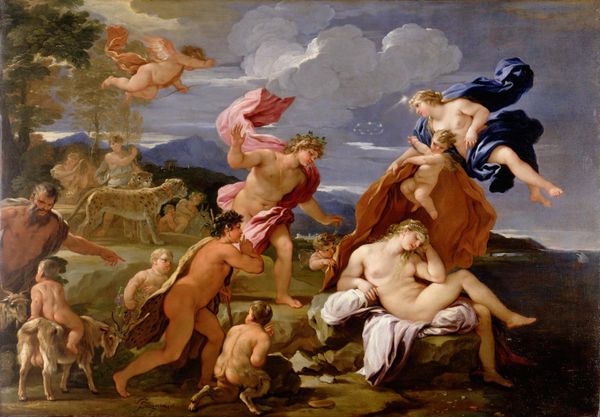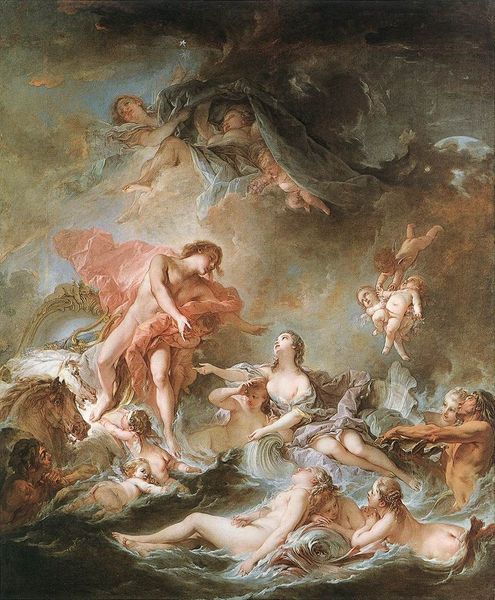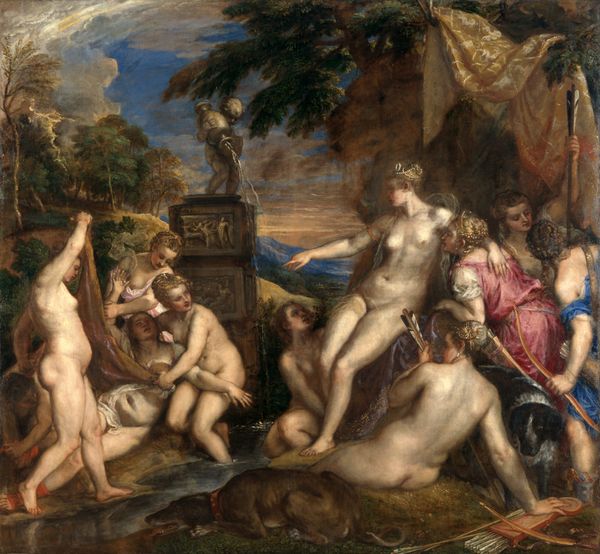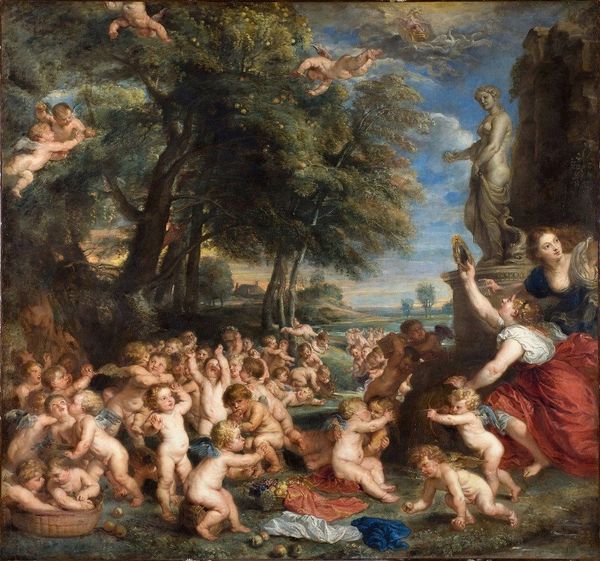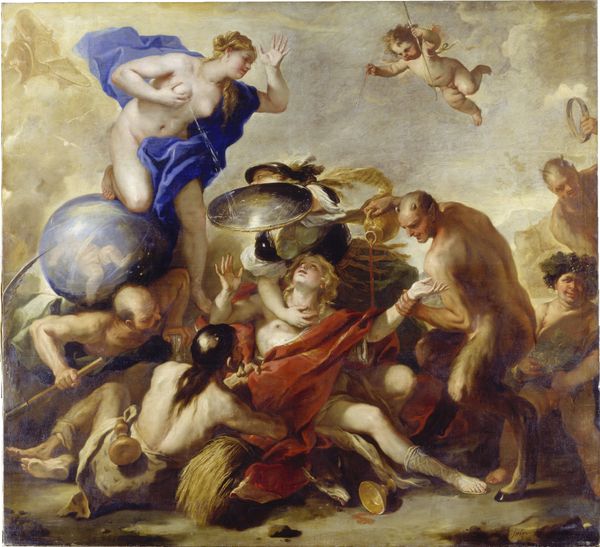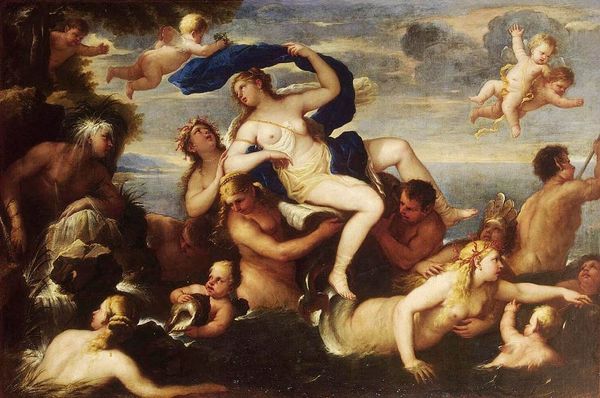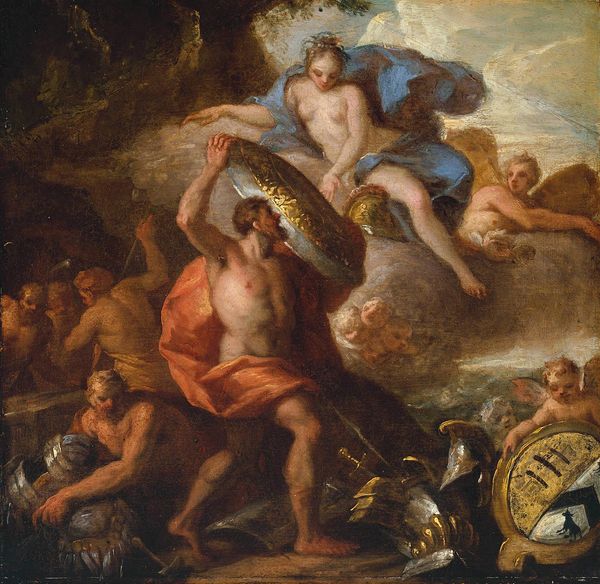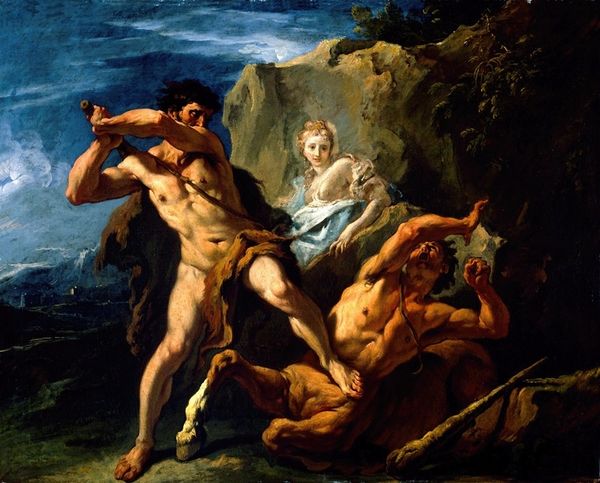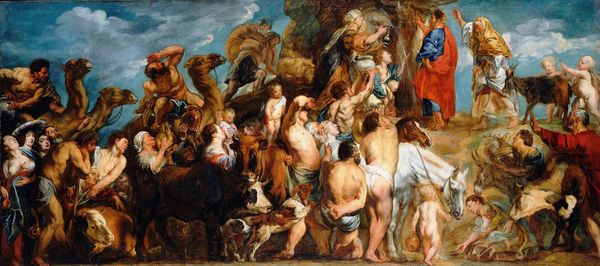
Diana and her Nymphs Surprised by the Fauns 1640
0:00
0:00
peterpaulrubens
Museo del Prado, Madrid, Spain
painting, oil-paint
#
narrative-art
#
baroque
#
painting
#
oil-paint
#
figuration
#
oil painting
#
flemish
#
mythology
Dimensions: 128 x 314 cm
Copyright: Public domain
Curator: Here we have Peter Paul Rubens's "Diana and Her Nymphs Surprised by the Fauns," created around 1640. The piece now resides in the Museo del Prado, Madrid. Editor: What immediately strikes me is the frenetic energy and dynamism. There's a clear sense of disorder, a beautiful riot of flesh and limbs. Curator: Rubens masterfully depicts the clash between chastity and lust. The scene reveals a very masculine viewpoint, especially considering Diana's associations with female independence. Her vulnerability here feels...pointed, shall we say. Editor: Yes, and look at how the figures are arranged, almost piled on top of each other. Rubens is a master of Baroque drama and emotion, of course, so this kind of exuberant chaos is not unexpected, but it reflects this deeper tension so vividly. The woodland setting itself teems with meaning, the forest acting as this kind of symbolic boundary between the sacred and the profane. Curator: I agree; it's essential to consider how myth and gender intersect here. Diana, goddess of the hunt and moon, embodied female autonomy. Yet, the fauns represent untamed masculine desire, turning this encounter into a power struggle, especially considering their appearance throughout art history. The whole painting exposes patriarchal anxieties. Editor: Absolutely. Consider also the classical roots. Rubens engages with centuries of visual language depicting nymphs, goddesses, and satyrs. He both respects that legacy and pushes against it. This builds an enduring story around human nature's chaotic interface of control and pleasure. Curator: Precisely, and his style certainly reinforced that Baroque taste for dynamism. Editor: I leave feeling aware of my own biases—of history, of symbolism. It is always enriching to explore visual vocabularies embedded within such vibrant canvases. Curator: Acknowledging historical context is everything; a key way to learn about ourselves and our position today, from examining the narrative presented to questioning the male gaze prominent during the period in art making.
Comments
No comments
Be the first to comment and join the conversation on the ultimate creative platform.
